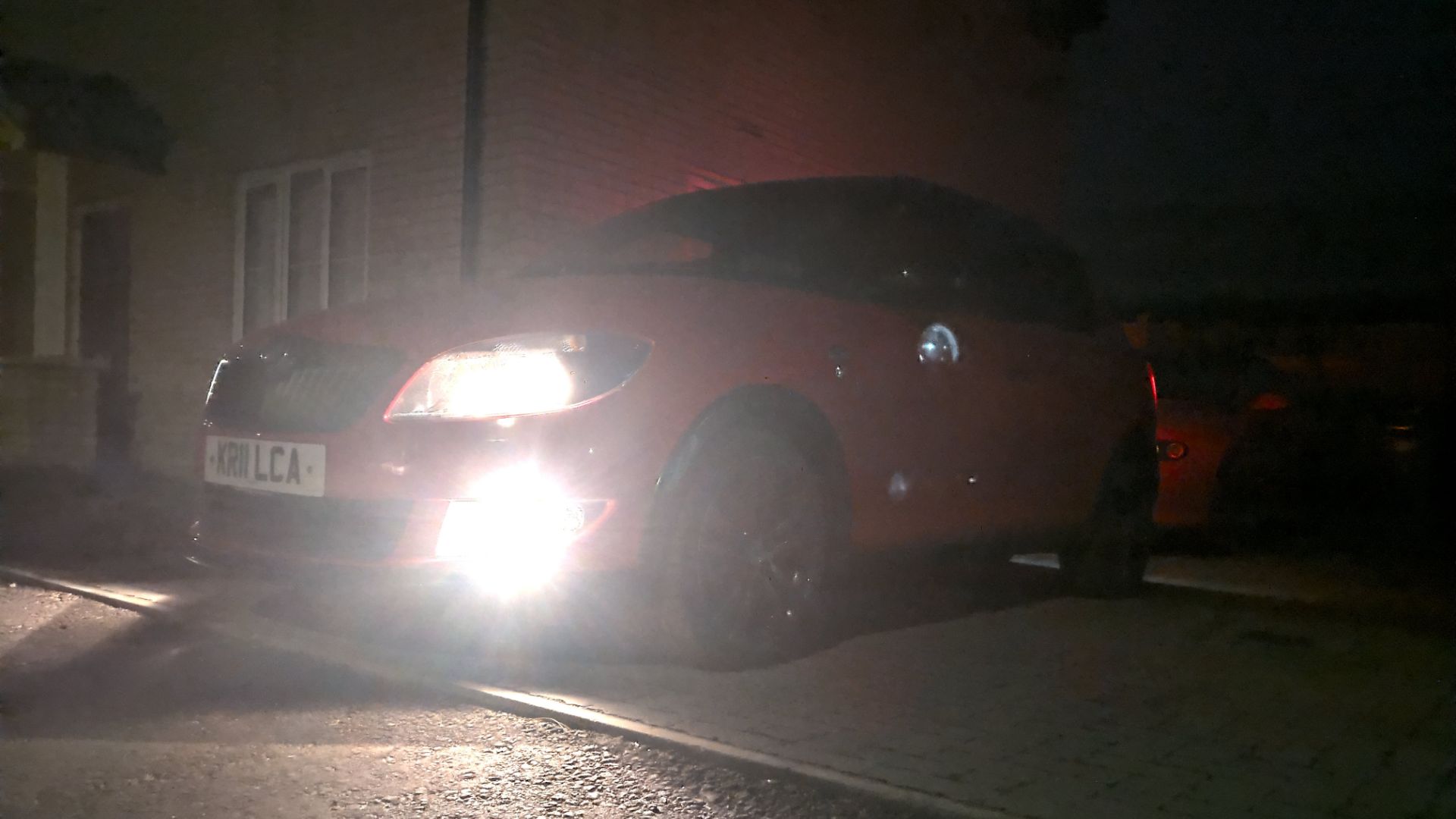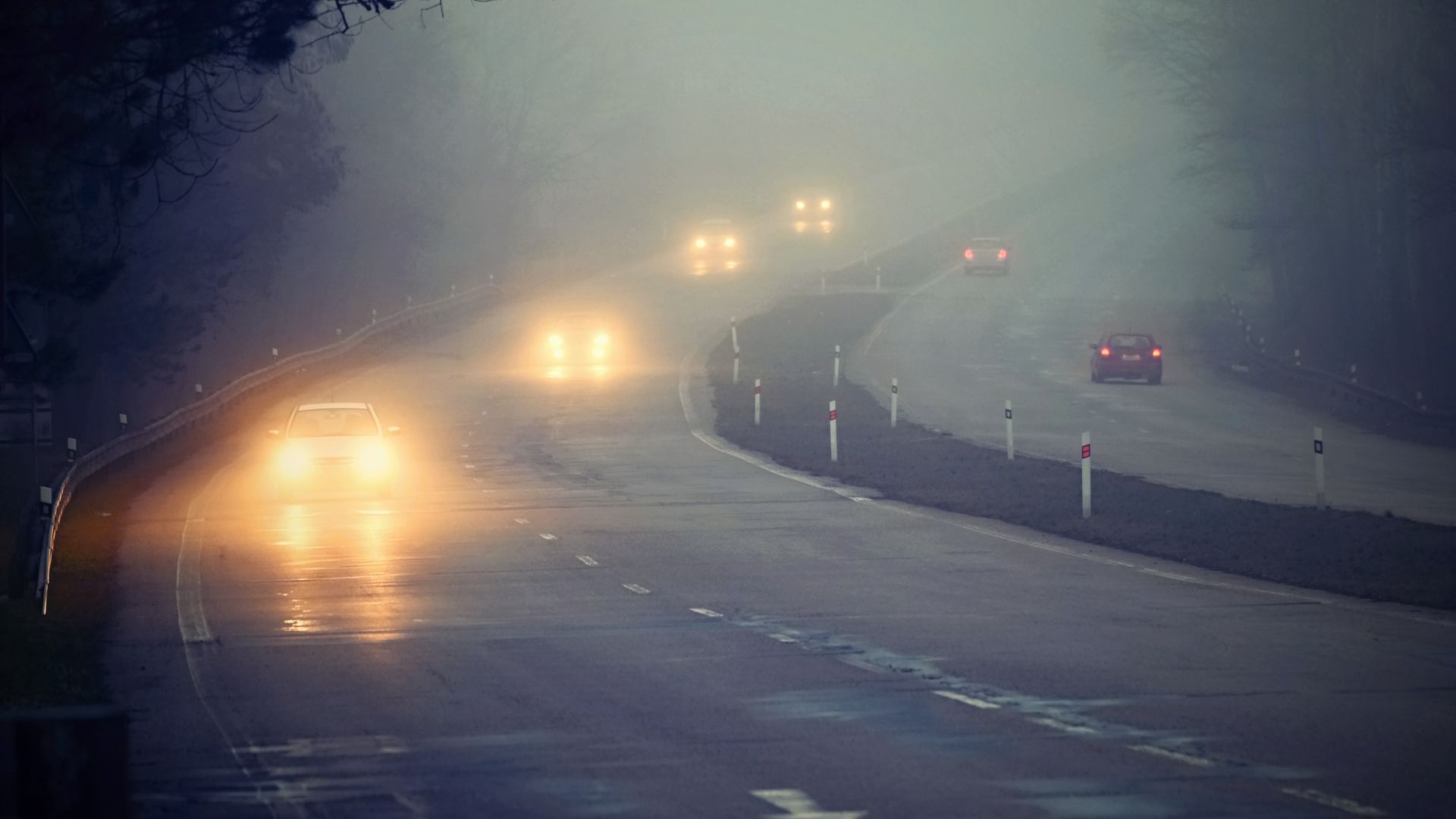
Winter driving can be difficult, and fog often makes the dark mornings and evenings more dangerous. You should therefore know how all your lights work on your car – and when to use them.
When there is fog, you should have your headlights turned on. However, many modern cars come with automatic headlights, which don’t always respond to foggy conditions. So you may need to switch them on manually.
The next consideration is whether to supplement your car’s headlights with fog lights.
What are fog lights for?
It sounds obvious, but bear with us. Rear fog lights are indeed for foggy conditions. But more importantly, they are for the benefit of other drivers. They don’t help your own vision.
Like your indicators, they are a sign to others that visibility is limited. And, of course, an indication that you are nearby.
When should I switch my fog lights on?
This is where things get hazy (so to speak) and it’s a subject of debate. Especially as inappropriate use of fog lights is a bugbear for many motorists.
Use the other cars around you as an indication of whether they are necessary. Look at the car 100 yards ahead and judge how visible it is. If you can see it clearly, fog lights aren’t needed.

If the car is lost in the haze, with only glimmers of light to be seen, then it’s time to switch your fog lights on.
This is especially important on the motorway, given how fast you and the cars around you are travelling. Truthfully, if conditions are that bad, we’d hope speeds will be below the 70mph limit.
As soon as conditions clear, it’s important to switch your fog lights off.
What if I leave my fog lights on?
Fog lights have a very specific purpose. Using them when they’re not needed can dazzle other drivers, and even obscure other lights on your car. You don’t want your brake lights to be invisible because your rear fogs are outshining them.
It’s a legal issue, too. If the police see you driving with your fog lights unnecessarily, a £50 on-the-spot fine could be issued.
How do I turn my fog lights on?

By law, all cars built since 1986 must have at least one rear fog light. This will be operated using a switch with a symbol similar to those above.
Front fog lights aren’t a legal requirement, but many cars have them fitted as standard. In most cars, they can be switched on using the same stalk as the headlights, or by a button on the dashboard.
The symbol for fog lights can be seen on the rectangular switch in the picture above. If the wavy line is to the left of the lamp graphic, those are your front fog lights. If the wavy line is to the right, this activates your rear fog lights.
You will also see a warning symbol on the dashboard to confirm fog lights are on.
Any other tips for driving in fog?
First of all, it’s usually beneficial not to use your main beam headlights. While it’s tempting to flick them on to give a better view, in thick fog it will cause reflections and reduce visibility even more.
Drive slowly, and leave a bigger gap to other vehicles in case they have to stop suddenly.
When you’re stopped, for example at traffic lights, keep your foot on the brake pedal so your brake lights are lit up, making you more visible to other traffic. When a car stops behind you, though, use your handbrake and remove your foot from the brake pedal to avoid dazzling the other driver.
ALSO READ:
Winter is coming: how to prepare your car for the cold



come to Cyprus and witness the idiot population majority driving with fog lamps on at night regardless of the conditions
Come to Northern Ireland and watch drivers in a line of traffic with main beam on as well as front LED lights and fog lights as well. And this is in town . Most don’t even DIP when meeting other drivers, Saintfield tonight in Main street I counted 8 vehicles with every light on while waiting at the traffic lights. And a Transit van with spotlights on the roof and front grill as well as headlights and LED… TOTAL posers blinding everyone, time POLICE started to throw the book at them.
I have a small sports spider and I would like to add to the other comments that many motorists, especially in vans and SUVs, blind me with their headlights, I realise this could be an issue that I should resolve myself, but only if they remain neatly behind me. My problem is the way quite a few are slightly out of line, therefore one of their headlights is directly in my mirrors. Also when they are coming head on, their headlights are always in my line of sight (the top of my car’s roof is under the window level of many SUVs).
I will echo the high beam use in fog. In my early days at the wheel, the first time I saw dense fog (which near the Channel happens quite a bit in winter!) I did turn on my high beam once in fog, I saw that not only could I not see better but vision was dramatically reduced. The best advice for fog is “Don’t drive unless essential:” It’s rather like snowy/icy conditions- they are additional hazards that should say to you that it isn’t a day to drive.